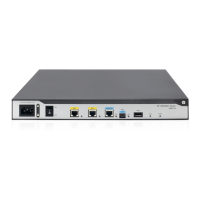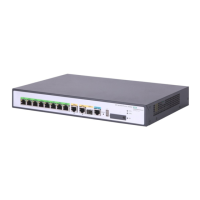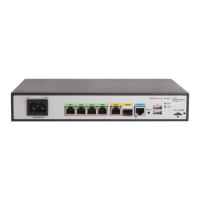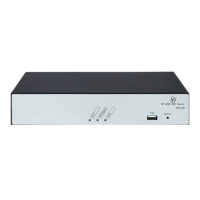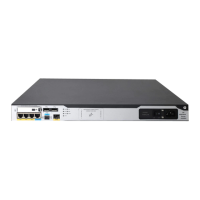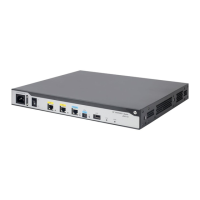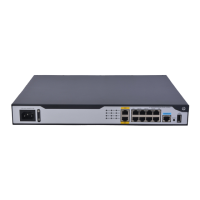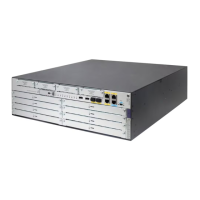hen you connect ADSL interfaces, use standard twisted pairs and correctly connect the cables.
This section covers only the physical configurations of ADSL interfaces (including ATM ADSL and ATM
ADSL 2+ interfaces). For information about configuring ATM services, see Layer 2—WAN Configuration
Guide.
Configuration procedure
To configure an ADSL interface:
Ste
1. Enter system view.
system-view N/A
2. Enter ADSL interface
view.
interface atm interface-number N/A
3. (Optional.) Configure
the interface
description.
description text
By default, the description is
interface-name Interface, such as ATM
2/4/0 Interface.
4. Activate the interface.
activate By default, the interface is activated.
5. Configure the standard
for an ADSL interface.
adsl standard { auto | g9923 |
g9925 | gdmt | glite | t1413 }
By default, the standard for an ADSL
interface is auto-negotiation.
The standard takes effect when you
re-activate the interface by either the
shutdown and undo shutdown commands
or the activate and undo activate
commands.
6. Configure the transmit
power attenuation for
the ADSL interface.
adsl tx-attenuation attenuation
By default, the transmit power attenuation
is 0, which means no attenuation.
7. Configure the expected
bandwidth for the
interface.
bandwidth bandwidth-value
By default, the expected bandwidth (in
kbps) is calculated with the following
formula: Interface baud rate/1000.
8. Configure an MTU
value for the interface.
mtu size
By default, the MTU value for the interface
is 1500 bytes.
60
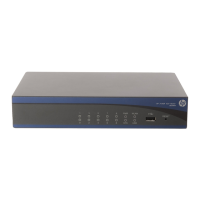
